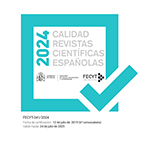Intercomprensione e plurilinguismo: studenti universitari di lingue e di discipline non linguistiche a confronto
Abstract
: La ricerca confronta la capacità di intercomprensione dello spagnolo fra due gruppi di italofoni nativi, studenti universitari di lingue straniere e studenti universitari di discipline non linguistiche, prevalentemente di ingegneria, per verificare se la competenza linguistica plurilingue e la competenza metalinguistica più matura degli studenti di lingue determinino un vantaggio nella comprensione di un testo scritto in una lingua affine non conosciuta. Le analisi evidenziano analogie piuttosto che differenze fra i due gruppi sia sul piano della comprensione del contenuto, misurata in termini di comprensione globale, analitica e inferenziale, sia delle strategie di comprensione adottate. Il vantaggio degli studenti di lingue emerge solo nella rapidità di trasposizione del testo spagnolo in italiano. I risultati sottolineano così come l’intercomprensione fra lingue affini sia un fenomeno altamente spontaneo e incoraggiano ad impiegarla come risorsa efficace per incrementare la motivazione all’apprendimento di nuove lingue e promuovere il plurilinguismo.
Downloads
##submission.format##
Licenza
La revista Cuadernos de Filología Italiana , para fomentar el intercambio global de conocimiento, permite el acceso sin restricciones a sus contenidos desde el momento de su publicación en la edición electrónica, por lo que es una revista de acceso abierto. Los originales publicados en esta revista son propiedad de la Universidad Complutense de Madrid y es obligatorio indicar su origen en cualquier reproducción total o parcial de la misma. Todos los contenidos se distribuyen con una licencia de uso y distribución.
Reconocimiento de Creative Commons 4.0 (CC BY 4.0).
Este hecho debe hacerse explícitamente en esta forma cuando sea necesario. Puede consultar la versión informativa y el texto de la licencia legal .
La revista Cuadernos de Filología Italiana no recibe honorarios por la presentación de trabajos o por la publicación de sus artículos.










